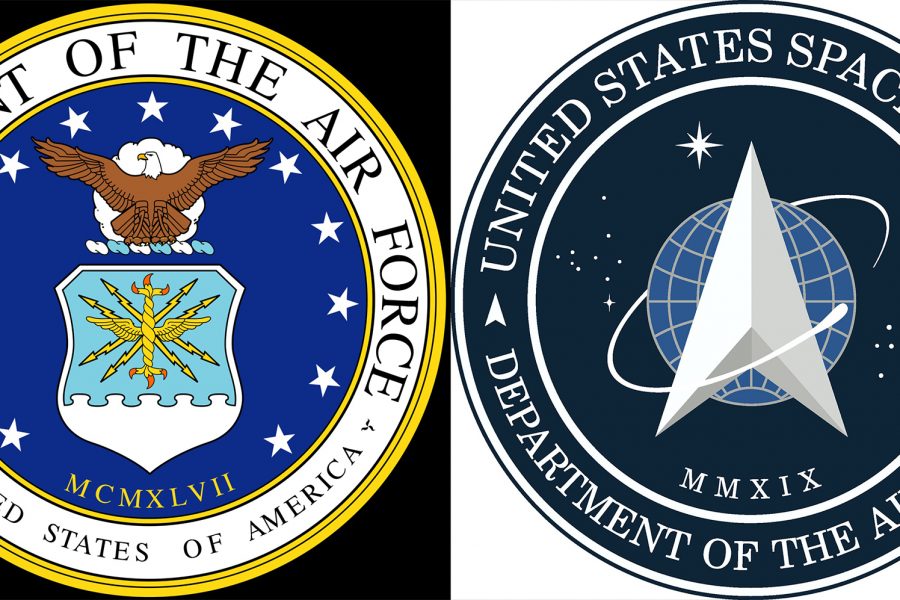The Department of the Air Force’s $207.2 billion topline spending request for fiscal 2021 is identical to the enacted fiscal 2020 budget, fulfilling recent USAF leaders’ predictions of flat budgets ahead.
Of that, $154.62 billion funds the U.S. Air Force, $15.38 billion funds the new U.S. Space Force, and $38.2 billion is non-blue pass-through funds, which is not controlled by either service and is distributed to other defense agencies for secret work, most of which is space-oriented. The “pass through” request declined slightly, from the enacted $39 billion in 2020. Although defense and USAF leaders have recently reported high-level discussions about doing away with the pass-through idiosyncrasy, it remains part of the 2021 budget.
The spending plan released on Feb. 10 includes slight declines in USAF procurement and military construction, but small increases in operations and maintenance and research and development. It also includes a 3-percent pay raise for troops and funds an additional 1,500 Airmen.
Aircraft procurement did not grow, but there is a sizable jump in USAF overseas contingency operations funding, which is in addition to the base budget.
Budgeting decisions were based on four themes derived from the National Defense Strategy:
- Connect the Joint Force
- Dominate space
- Generate combat power—defined as “blunt any attack against the U.S. or our allies”
- Conduct logistics under attack.
The budget reflects “our most current thinking about the Air and Space Forces We Need,” USAF said—a departure from its “Air Force We Need” terminology of the last 18 months.
Overall procurement funding declined by $1.4 billion, to $25.4 billion in 2021. Funding for aircraft and missile procurement remained flat, at $17.89 billion and $1.86 billion, respectively, but ammunition purchases dropped by $1 billion, and “other procurement” fell by $600 million.
The procurement request funds just 60 fighters, including 48 F-35As and 12 F-15EXs. The Air Force has said repeatedly it needs to buy 72 fighters a year to stop the aging of its fighter force, and the F-35A request again falls short of the 60 per year the service said it planned to be buying by now.
The Air Force again plans to purchase 15 KC-46A tankers, though procurement of its HH-60W combat search and rescue helicopters will accelerate to 16. The budget also funds the first MH-139 Grey Wolf VIP/ICBM support helicopters and various aircraft upgrades. Munitions procurement is adjusted “based on inventory levels,” according to budget documents.
In space, the budget buys two Global Positioning System III follow-on satellites and three National Security Space Launch vehicles.
The Air Force’s OCO budget increases from $14.3 billion enacted in ’20 to $21.5 billion in ’21, and the biggest share of that rise goes to “weapon system sustainment” needs. Procurement in the OCO account drops $366 million, and O&M declines by $1.1 billion. OCO monies will help replenish JASSM-ER stealth standoff missiles, JDAM bombs, Hellfire missiles, Small Diameter Bomb 1, and Combat Rescue Helicopters used or lost in combat operations. The OCO budget also supports “six enduring locations” where USAF operates overseas, hand-launched RQ-20B Puma drones, general purpose bombs, and six European Defense Initiative military construction projects.

The department is asking for $37.3 billion in research, development, test, and evaluation (RDT&E)—a 6 percent increase from the $35.2 billion enacted in 2020—propelled chiefly by a $1.6 billion increase in operational systems development and an $800 million increase in demonstration/validation programs.
Engineering and Manufacturing Development accounts actually decline by $800 million, and there were small decreases in applied research and Advanced Technology Development, as well. Nearly a third of USAF’s overall RDT&E spending goes to Space Force, which requested $10.3 billion.
The Air Force’s RDT&E request funds:
- The Advanced Battle Management System development and capability demonstrations
- Nuclear triad modernization, primarily through the development of the B-21 bomber and Ground-Based Strategic Deterrent
- Next-Generation Air Dominance
- Development and testing of the T-7A advanced trainer
- Next-generation satellites
- “Significant development in classified programs.”
Operations and Maintenance funding increases from $52.4 billion enacted for fiscal ’20 to $55.7 billion in ’21. While initial USAF documents did not break out how much funding is going to connectivity programs—the apparent priority in the ’21 budget—the O&M account funds the Joint All-Domain Command and Control Shadow Ops Center, Space Force operations and headquarters, facility sustainment, and a 1-percent civilian pay raise. It also funds the integration of Pilot Training Next and a flying hour program intended to “sustain and rebuild readiness.”
USAF’s personnel spending increases from $34.1 billion to $36.6 billion, chiefly due to an increase of 1,500 Airmen—bringing total endstrength to 512,100—and a 3-percent pay raise for uniformed personnel. The additional Airmen will support growth in the F-35 and KC-46 force structures, and “mitigates critical shortages in operational tanker and fighter squadrons.” Space Force endstrength is funded at 6,400.
Personnel spending increases by $500 million to $4.8 billion for the Air National Guard, and $200 million for the Air Force Reserve.
Funding for military construction falls by $1.3 billion, to $1.4 billion.
The MILCON account funds:
- New T-7A and F-35 simulator buildings
- A Space Control facility
- Recapitalizes basic military training facilities and weapons storage
- Completes consolidation of the Consolidated Space Operations facility
- Funds oversight of privatized housing, to combat deficiencies in this area. USAF said it is “committed to a safe, secure environment” for its people.
- And, it funds planning and design of future projects.

